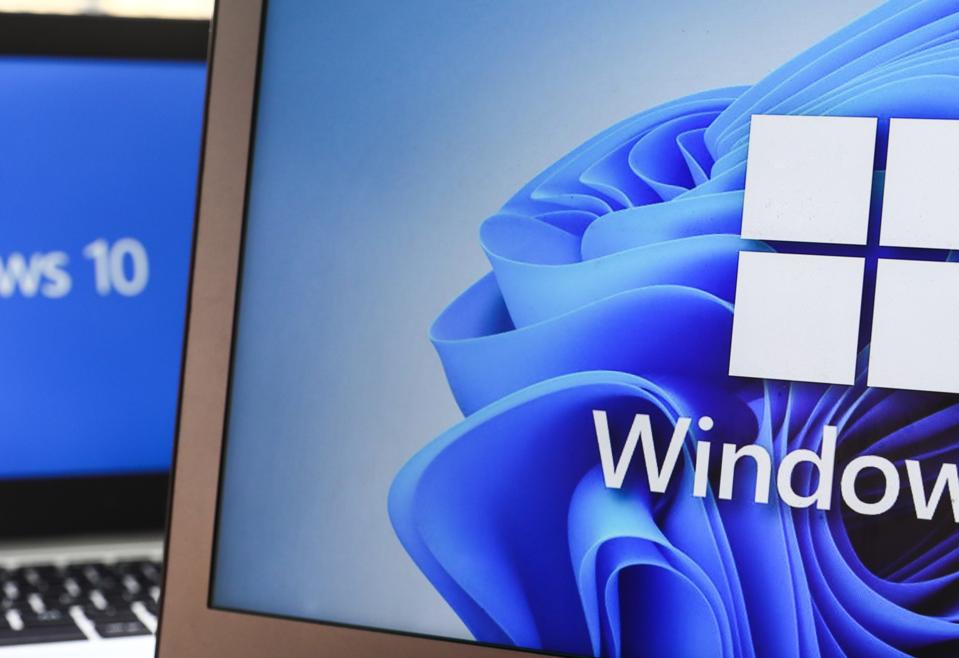Are you now at risk?
NurPhoto via Getty Images
Republished on October 7 with new warnings for consumers as Microsoft’s support cutoff is now just one week away.
Microsoft has a “security disaster” on its hands. Some 400 million Windows users must now brace for a “uniquely troubling” threat that leaves their PCs suddenly at risk. If this warning affects you, you’re running out of time to act. Do not leave it too late.
New data suggests Windows 10 is still running on 41% of all PCs. That’s a sharp drop from the 46% market share at the end of September. But it’s too little too late late. In 10 days, security updates will end for users not enrolled in Microsoft’s extended support option. This means paying $30 or ticking the right boxes to snag an extension for free.
That 41% equates to almost 600 million PCs. Of that, it is assumed up to 400 million cannot upgrade to Windows 11 given mandatory hardware hurdles. Older PCs without the right components can’t upgrade. Not without a green-fingered workaround.
“By contrast,” advocacy group PIRG says in its warning, “when support for Windows 8 ended in January 2016, only 3.7% of Windows users were still using it. Only 2.2% of Windows users were still using Windows 8.1 when support ended in January 2023.”
This follows similar warnings from Consumer Reports and EuroConsumers, with the latter pointing out Microsoft is “phasing out Windows 10 on a much shorter timeline than in the past.” Just four years after the launch of Windows 11.”
PIRG describes the scale of the impact here as “staggering,” and says it “can be traced to the popularity of Windows 10 and Microsoft’s decisions to impose strict hardware requirements in order to upgrade to Windows 11.”
PIRG’s original focus was the e-waste of hundreds of millions of PCs rendered useless. Although enterprising secondary marketeers are pushing Linux and Chromebook OS alternatives for otherwise good-enough hardware for which Windows is closed.
PIRG echoes warnings from the cybersecurity community. “When there are no more updates, quickly-addressed exploits become open doors.” Which means “ransomware gangs and other malicious actors will be rubbing their hands in glee at the prospect of millions of unpatched – and unpatchable endpoints – after October 14.”
I’m going to assume this is a blip in the data, but the latest Windows breakdown also suggests a surge in Windows 7 usage just ahead of Windows 10’s decline. StatCounter reports almost 140 million PCs now running an OS that was retired in 2020.
Windows 10 deadline is almost here.
StatCounter
If you’re running Windows 10, whether at work or at home, you must act before Oct. 14 — if you have not done so already. You are now at risk from security updates ending.
Enroll in the free ESU, which requires a Microsoft and a OneDrive account. Or accept the inevitable and upgrade to Windows 11. This has not proven a popular OS, and it has taken this deadline to move the needle on its install base. But it is what it is. Don’t take the risk with your own PC and data security.
Meanwhile, Windows Central reports that “calls to extend Windows 10 support are piling up for Microsoft.” This relates to the European carve-out not being extended to other regions, as much as the more acute issue of support ending and such a large number of users being cut off just one week from now.
“While users in the European Economic Area will have access to Microsoft’s ESU program due to their law, users in the U.S. and other regions weren’t as lucky. Repair.eu’s campaigner Cristina Ganapini says Microsoft’s move is a step forward, and proves that it’s possible to extend support for Windows 10 beyond the set cutoff date.”
According to this latest report, “the Restart Project, which helped co-develop the End of 10 Toolkit to help support Windows 10 users after Microsoft pulls the plug on the OS, seemingly echoed these sentiments, indicating that the ESU program feels like a last-minute snooze button, which only acts as a band-aid on a bleeding system.”
Hardly surprising, then, that Environment America has issued an Oct. 7 release, echoing other warnings that Microsoft’s “unnecessary action could adversely affect environment, consumers, up to 400 million computers.”
The advocacy group warns that “although Microsoft is offering ways to pay for ongoing Windows 10 support, or sign up for other Microsoft services to qualify for support, the percentage of consumers who will opt to pay for updates will likely be fairly marginal.”
That is the great unknown — just how many of those 400 million Windows 10 users who can’t upgrade to Windows 11 have enrolled in the ESU.
Source link


